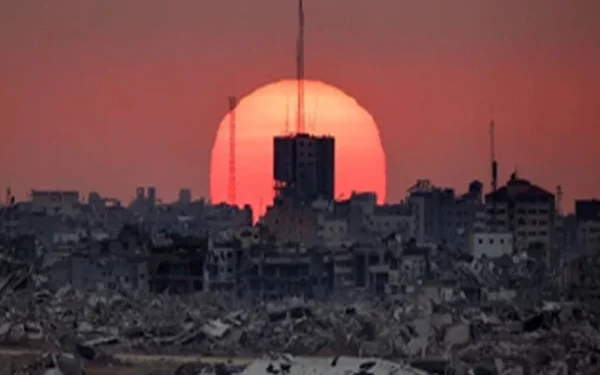Introduction
In a potentially significant development in the ongoing Gaza conflict, Hamas has confirmed that it is currently reviewing a final ceasefire proposal presented by U.S. President Donald Trump. However, the group has made its core condition clear: the complete withdrawal of Israeli forces from Gaza remains non-negotiable. The announcement came amid growing international pressure to de-escalate the war, which has now stretched over many months and left tens of thousands dead or displaced.
While the United States has played a mediating role through Qatar and Egypt, the chances of a final deal remain uncertain. Statements from both Israeli and Hamas leadership reflect hardline positions, raising concerns about whether common ground can be found in the short term.
Trump’s Ceasefire Initiative: A 60-Day Pause in Hostilities
U.S. President Donald Trump announced on Tuesday that Israel has agreed to a 60-day ceasefire plan. The deal, according to Trump, was reached after high-level discussions between his representatives and Israeli officials.
Posting on the social media platform Truth Social, Trump stated:
“This is the best and final offer. Israel has accepted the conditions. I hope Hamas does the same. There may never be a better chance than this.”
The proposed ceasefire would involve a temporary halt to military operations, during which humanitarian aid could be delivered, hostages might be exchanged, and space for further diplomatic negotiations would be created.
The U.S. administration has framed this initiative as a critical opportunity to end months of devastating conflict, rebuild trust, and pave the way for a longer-term political solution in Gaza.
Hamas’s Response: Conditional Review of the Proposal
Hamas has confirmed receiving the proposal and is currently reviewing it through its intermediaries in Qatar and Egypt. However, the group was quick to reiterate that a permanent Israeli military withdrawal from Gaza is a prerequisite for any agreement.
In a statement released by Hamas’s political office, the group said:
“We are carefully evaluating the proposal presented by President Trump, but we emphasize that any agreement must include a clear and unconditional withdrawal of all occupying Israeli forces from the territory of Gaza.”
Hamas also insisted that it would only accept an arrangement that includes an end to the blockade, unfettered humanitarian access, and guarantees of Palestinian sovereignty.
Netanyahu’s Defiant Tone: “No Hamas, No Hamastan”
Reacting publicly for the first time to Trump’s ceasefire announcement, Israeli Prime Minister Benjamin Netanyahu adopted a firm stance, reaffirming Israel’s goal of eliminating Hamas completely.
“There will be no Hamas, nor Hamastan. We are not going back to the past, it is all over,” Netanyahu stated.
His comments suggest that Israel remains committed to its military campaign, which has focused on targeting Hamas leadership, dismantling the group’s tunnel networks, and preventing the re-establishment of Hamas control in Gaza.
Netanyahu’s position signals that Israel is not prepared to accept a ceasefire that allows Hamas to remain militarily or politically intact, a key sticking point that could undermine the entire peace initiative.
The Role of Egypt and Qatar as Mediators
Both Egypt and Qatar have been instrumental in previous ceasefire negotiations between Israel and Hamas, and they continue to serve as intermediaries in this latest round.
Egypt’s intelligence officials and Qatar’s foreign ministry are reportedly shuttling between the parties, refining the terms of the proposal and exploring possible guarantees that could satisfy both sides.
These regional powers are also working closely with the U.S. to ensure a coordinated international approach, especially as the humanitarian crisis in Gaza worsens by the day.
Background: The Ongoing Gaza War and Its Toll
The war in Gaza began on October 7, 2023, following a large-scale attack by Hamas that resulted in the deaths of approximately 1,200 Israelis, according to Israeli sources. In response, Israel launched a massive military operation in Gaza, vowing to dismantle Hamas and eliminate its military capabilities.
Since then, according to the Hamas-run Ministry of Health in Gaza, more than 56,000 Palestinians have been killed, including thousands of women and children. Hundreds of thousands have been displaced, with many living in makeshift shelters or overcrowded schools.
The war has led to:
- Widespread destruction of civilian infrastructure, including hospitals, schools, and mosques.
- Blockades on humanitarian aid, exacerbating the suffering of civilians.
- A healthcare system on the brink of collapse due to lack of medical supplies and staff.
- A famine-like situation, with food, water, and fuel in critically short supply.
The United Nations and international NGOs have repeatedly called for an immediate ceasefire, warning that continued hostilities could lead to the complete collapse of civil society in Gaza.
Hostage Crisis Adds to the Complexity
One of the key elements of the ceasefire proposal involves the issue of Israeli hostages still held by Hamas. It is believed that approximately 50 hostages remain in Gaza, with around 20 confirmed to be alive.
The return of these hostages is a top priority for the Israeli government, and any ceasefire would likely include a staged exchange process involving Palestinian prisoners held in Israeli jails.
However, Hamas has reportedly tied any hostage negotiations to broader political demands, including an end to the blockade and recognition of Palestinian political rights.
Obstacles to a Final Agreement
Despite the renewed diplomatic push, significant obstacles remain:
- Israel’s unwillingness to accept a ceasefire that does not eliminate Hamas militarily.
- Hamas’s refusal to agree to any deal that doesn’t guarantee full Israeli withdrawal.
- The lack of trust between the parties due to repeated failed negotiations in the past.
- Domestic political pressure on Netanyahu from hardliners who oppose any concessions.
- Regional instability, including rising tensions in the West Bank and along the Lebanese border.
International Reactions and the Global Diplomatic Climate
The international community has responded cautiously to the ceasefire proposal. While many countries, including France, the UK, and the UN, have welcomed the U.S. effort, they have also expressed skepticism about the feasibility of success without mutual concessions.
U.N. Secretary-General António Guterres has called on both parties to act with urgency, warning that:
“The cost of inaction will be measured in more lives lost and a deeper humanitarian catastrophe.”
Meanwhile, human rights organizations have urged the U.S. to use its influence to ensure that the ceasefire leads to a sustainable political solution, rather than just a temporary pause in violence.
Conclusion: A Proposal at the Crossroads
While the proposal presented by President Trump could serve as a crucial turning point in the ongoing Gaza conflict, the deep-rooted mistrust and entrenched positions of both Hamas and the Israeli government remain major barriers to a lasting peace.
Hamas is standing firm on its demand for the complete withdrawal of Israeli troops from Gaza, while Netanyahu’s declaration that “there will be no Hamas” reflects a zero-tolerance approach to any form of Hamas governance.
The coming days will be critical in determining whether the parties can move toward compromise and de-escalation, or whether the conflict will continue to spiral into further destruction.
With international pressure mounting, the need for bold diplomatic moves and genuine political will from all sides has never been greater.

























